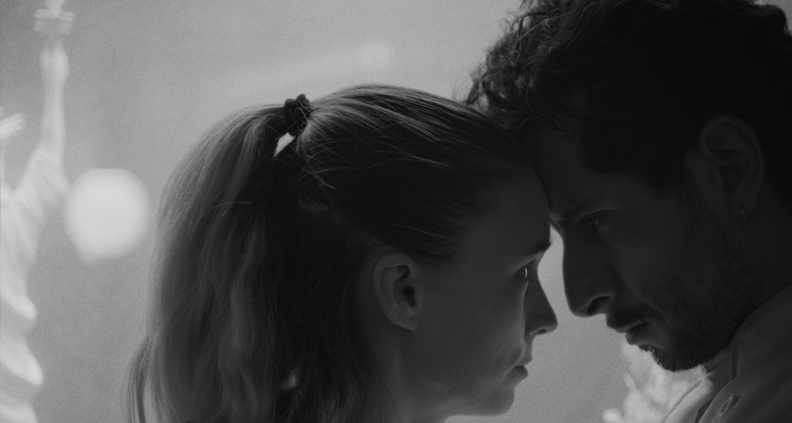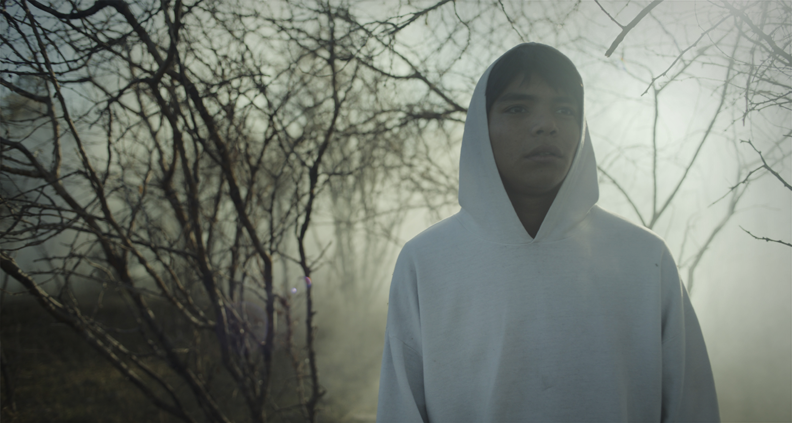Festival Visions: How GuadaLAjara Film Fest is Creating Opportunities for Both Filmmakers and Audiences
Mexico’s Guadalajara International Film Festival (FICG) is one of North America’s biggest festivals, and for the last five years, it’s had a satellite festival in Los Angeles, the GuadaLAjara Film Festival. Not only is a showcase for some of the best films from the OG FICG, but it also supports Latinx filmmakers from all over.
This year the festival is trying some new things that are a benefit to both its audiences and its filmmakers. Opening night at the Million Dollar Theater in DTLA will feature a 35mm print of Mexican Oscar submission Sujo, made especially for the fest. The print will be available for the film’s distribution going forward as well.
The festival is also expanding where it’s screening films, trying to meet the audiences where they are. As well as some beautiful downtown locations, films will be show at Vidiots in Northeast LA, a free outdoor screening at Gloria Molina Grand Park, and the recently opened Milagro theater in Norwalk, which as well as being a top-of-the-line cineplex, is also a cultural hub for the Latinx community. “It’s about accessing films and who gets to access these films,” said Vanessa Perez, Executive Producer of the festival.
Earlier this week we spoke with Perez and Christine Davila, the Head Programmer of the festival, about what audience members can expect at this year’s festival.
Tell me a little bit about like what you look for in a film and what makes a film a good fit for the GuadaLAjara Film Festival.
Christine Davila (Head Programmer): It’s curated, right? It’s definitely films that explore that bridge of cultures, and are mostly created by not only Latinx people, but also BIPOC creators.
But it’s also a very small, very small selection. This year, we ultimately will have 10 feature films, which is more than last year, and we have 14 short films. So it’s a very tiny collection.
There’s a couple that we do also always like to pull from the Guadalajara Film Festival that happens in Guadalajara in June, that are films that having watched the entire selection, we feel will do well in the United States, and in LA in particular, for their themes.
And with the short films, I love the curatorial aspect of it because it’s really about what selection of short films are telling a story. And then we always also want to kind of celebrate filmmakers who are making films independently, but also are doing something different with the resource that they have. We have lots of genre.
So it’s a really curated mixed bag of things that we hope we’ll find an audience here and that will also kind of give the experience that there’s bridges being made between Latin America and US audiences.

So in terms of making that bridge, what are you looking for that maybe is that connecting element that makes a story universal?
CD: So for instance, our centerpiece, Monstruo de Xibalba, it’s such a universal coming of age story. It also coincides with the holiday that we are squarely in with Dia de los Muertos, November 1st -3rd. It’s about this kid discovering death and is abandoned. Yes, it’s in Spanish, and in fact, it’s in Mayan language as well, but that’s something that just feels so universal.
And it’s really about connecting both the genre element and films that are telling a story very evidently through genre about themes like being accepted. Or trying to self-actualize, in Rent Free, which is a movie that played at the Tribeca Film Festival. La Arriera, which is a period-epic queer love-story, it was at the Guadalajara Film Festival, that’s also about this woman’s wish to really become independent. It’s like such a fantastic horse-riding action-adventure romantic movie that really hope that people take a chance on.
So I think it’s really finding those stories that are transmitting such a universal desire that everyone can relate to and that are also doing it in a very entertaining way.
That’s awesome. All those movies sound very exciting.
Vanessa, tell me a little bit about what your relationship is with supporting independent filmmakers and where do you see the festival as fostering those films and those filmmakers.
Vanessa Perez (Executive Producer): I think for us as a film festival, it’s a multi-pronged approach. I think one of the things is, this festival is the sister festival to the Festival Internacional de Cine en Guadalajara. And, you know, it’s been going on for 15 years. But really, I think the last four years, it’s really been about understanding how to support filmmakers from both sides of the border. We’re kind of interconnected, yet our experiences are quite different.
And I think that we are trying to find ways of linking our experiences together while at the same time understanding that making films in the U.S. is quite different. The Latinx community does need additional support in getting their voices out and getting them heard. And I think we’re also trying to bring in the perspective about what it is to make something outside of the U.S. for U.S. Latino filmmakers.
We understand how much the industry is changing and how we have to change with it. For instance, an initiative that we did this year is that our opening night film, Sujo, will be shown in 35mm. That was super important because we’re talking about the idea of: why not create something in 35mm and give it the opportunity to also live in a different space and perhaps even help with an independent distribution deal where we have theaters that are showing films in 35 millimeter and that creates a different appetite, right?
So those are the kind of things that we’re looking to do. I think we’re really excited about being a film festival that is listening and that’s understanding how the independent film business is changing.

CD: We’re super happy and proud to be presenting Sujo, which is the Mexican entry for the Oscars, in the Million Dollar Theater on 35mm because, even though it’s playing at AFI Fest, we just felt that what’s important is circling up around these two directors and this is their second feature film. And so we just thought that, yes, you could play AFI, but also come with us, come to your fam and play in the big, gorgeous, Million Dollar Theater on a 35mm that the festival has provided along with Kodak because of a Kodak sponsorship.
We’re actually providing them with a 35mm print that they can use on their subsequent release. The ultimate goal of the festival to really be nimble and flex where we can and be of the most support to a film, and kind of break the rules a little bit too.
At first we were a little reluctant to play a film that’s going to play in LA just a couple of weeks before. But again, given the importance of us wanting to really celebrate and support their Oscar campaign, we’re like, let’s do it. And it’s a fantastic film too.
You’re right. 35mm makes something more of an event. It brings people out. It gets people excited.
Tell me a bit about getting the print made. How did that work?
VP: It’s actually a funny story. So last year, our closing night was at the Million Dollar Theater and we had a third party involved with our rental, and we didn’t realize that there was no DCP player at the theater. We were under the impression there was. So when we got in there to test the film, we ultimately had to go with a Quicktime file, and for us as a film festival, that’s not ideal. I know it happens, but that’s not how we want to show our closing night film.
And it just so happened that the projectionist at the theater, he used to run all of the theaters on Broadway for many, many years, running the 35mm prints. And so he was like, ‘Well, you should get a 35mm print and show it.’ And that just kind of got our heads spinning around this idea of like, ‘Huh, that’s super interesting. Maybe we should go back to the past and understand how 35mm does kind of create different opportunities.’
And so we actually partnered with Kodak and Labodigital, which is a post-production house in Mexico. They’re basically providing the resources so that we can make this happen.
And we’re actually calling this project the Permanence Archive, and it’s something that we’re launching this year, and we definitely want to make it a tradition. My hope is that at some point, these prints are used for additional distribution.
That’s such a cool story. I love all the old projectionists. They all seem to be characters.
VP: Yes. Yep.
Another thing that I think is really cool is you’re working with the Milagro Theater. Tell me a little bit about reaching out to LA and getting the community excited and coming out to the festival.
VP: I think for us, it was very symbolic and very kind of necessary to be able to bring Milagro into the fold. Like you said, it’s about accessing films and who gets to access these films.
And I think that Tonantzin Esparza, who’s running this with us at Milagro, is really doing a great job. I know she played DìDi. I went to a Q&A that was happening there. And again, it’s not an easy feat, because oftentimes you will be told that the audience isn’t there, right? But I do think that going to that Q&A and just sitting there, I was like, ‘There are people here!’ And, you know, there’s so many community colleges that are near there, like Cerritos Community College or Long Beach City College. So I think it’s just about accessibility.
And I think for me, part of the excitement is to be able to work with these local community colleges that I know that there’s going to be an appetite for these films, and just to make them accessible.
The GuadaLAjara Film Festival runs from November 1-3 all over Los Angeles, and tickets & passes are available now.
[Feature image – Ponyboi, playing Nov. 2]
Film Independent promotes unique independent voices by helping filmmakers create and advance new work. To become a Member of Film Independent, just click here. To support us with a donation, click here.
Keep up with Film Independent…